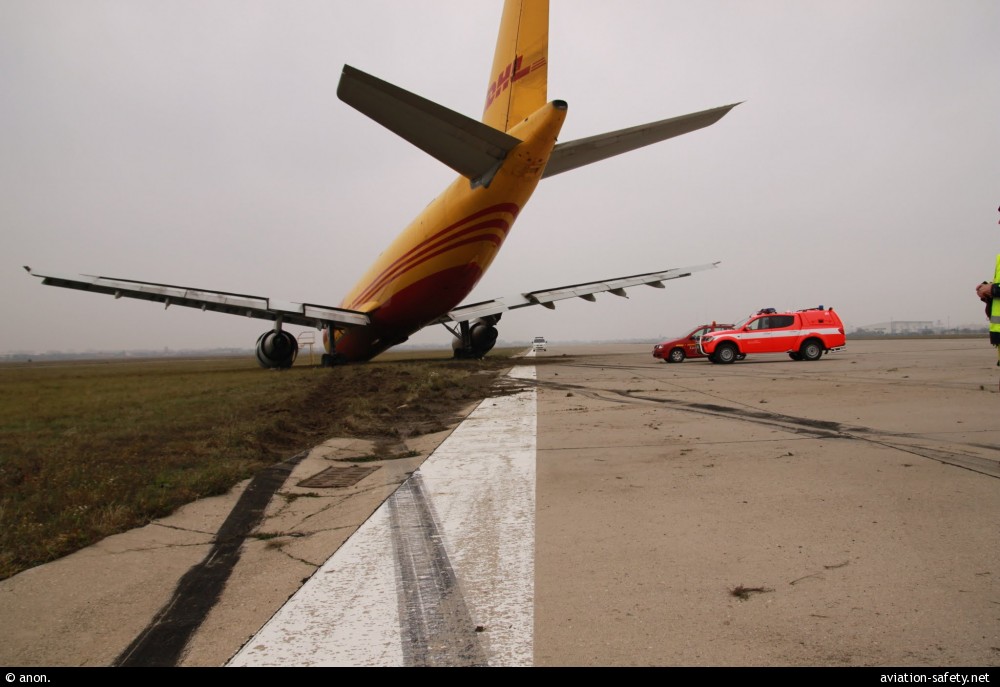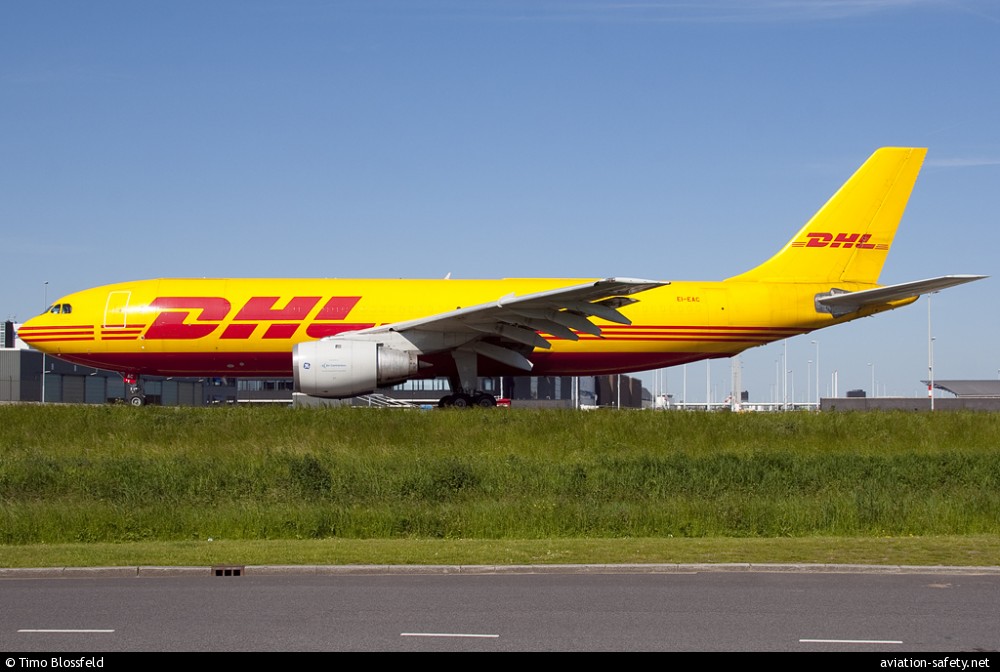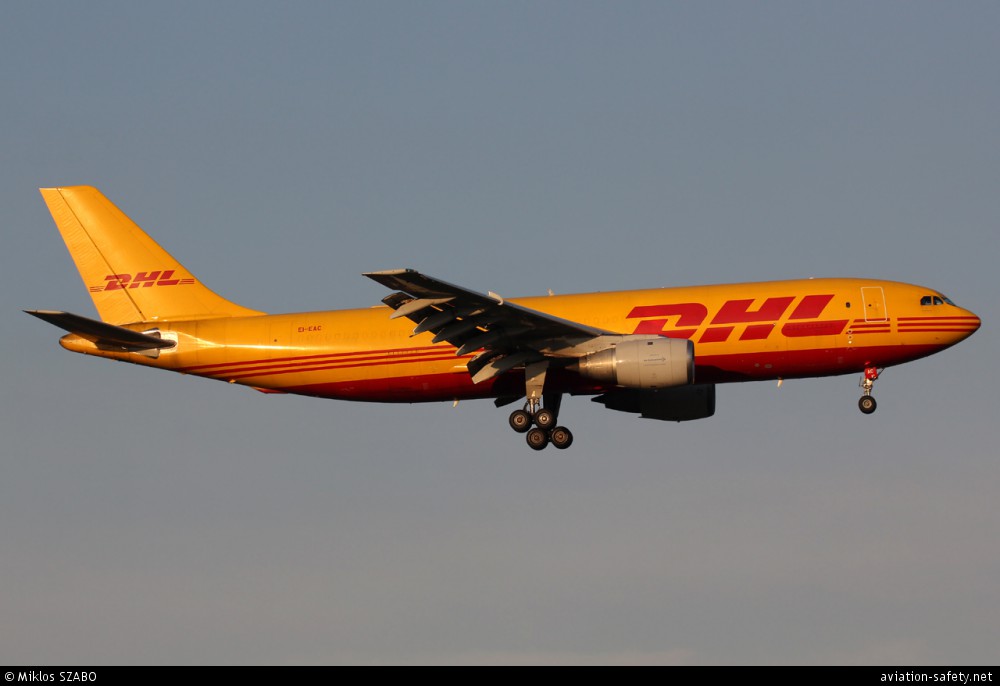
| Date: | Friday 16 November 2012 |
| Time: | 05:25 |
| Type: |  Airbus A300B4-203 (F) |
| Owner/operator: | DHL Aviation |
| Registration: | EI-EAC |
| MSN: | 250 |
| Year of manufacture: | 1983 |
| Engine model: | General Electric CF6-50C2 |
| Fatalities: | Fatalities: 0 / Occupants: 3 |
| Aircraft damage: | Substantial, written off |
| Category: | Accident |
| Location: | Bratislava-M. R. Stefánik Airport (BTS) -
 Slovakia Slovakia
|
| Phase: | Landing |
| Nature: | Cargo |
| Departure airport: | Leipzig Airport (LEJ/EDDP) |
| Bratislava-M. R. tefánik Airport (BTS/LZIB) | |
| Investigating agency: | BEA |
| Confidence Rating: |
A Airbus A300B4-203F cargo plane sustained damage in a landing accident at Bratislava-M. R. Stefánik Airport (BTS), Slovakia. The three crew members were not injured.
The crew took off from Leipzig Airport (LEJ), Germany at 04:38 bound for Bratislava. The flight of around 45 minutes took place without incident and the crew was cleared for an ILS approach to runway 22. The captain was pilot flying.
During the descent, the controller informed the crew that the wind was from 120° at 7 kt. The ILS 22 approach was stable.
At 05:25, the main landing gear touched down about 700 metres from the threshold of runway 22. After about 360 metres of the landing run, the crew felt some violent vibrations, which increased as the speed decreased. The airplane veered off to the left. The crew applied heavy braking and tried in vain to use the nosewheel steering.
At less than 45 kt, the airplane exited the runway to the left about 800 metres after nosewheel touchdown. The nose gear struck a recessed concrete inspection pit and collapsed. The airplane slid for a few dozen metres before coming to a stop. The crew evacuated the aeroplane.
Conclusion:
Incorrect installation of one or more washers on the nose gear torque link centre hinge made it impossible to lock the hinge shaft nut effectively. The unscrewing and the detachment of the latter in service caused the loss of nose gear steering. Free on its axle, the nose gear bogie began to shimmy, which made the aeroplane veer to the left. The aeroplane exited the runway and the nose gear collapsed during the collision with a concrete inspection pit for access to the runway lighting electric cables.
The runway excursion was due to the incorrect and undetected re-assembly of the nose gear torque links.
Despite the presence of a detailed diagram, the absence of clear and detailed instructions in the text of the manufacturers AMM, allowing the operator to ensure that the assembly was correct, contributed to the incorrect assembly.
The failure of the nose gear was due to the collision with an obstacle in the runway strip.
The absence of any regulation requiring that equipment in the immediate vicinity of a runway or of a runway overrun area be designed so as to limit as much as possible any damage to aeroplanes, in case of a runway excursion, contributed to the accident.
Accident investigation:
 |
|
Sources:
SKYbrary
Location
Images:

photo (c) anon.; Bratislava-M. R. Štefánik Airport (BTS/LZIB); 17 November 2012

photo (c) Timo Blossfeld; Amsterdam-Schiphol International Airport (AMS/EHAM); 26 May 2012

photo (c) Miklos SZABO; Budapest-Ferihegy Airport (BUD/LHBP); 20 June 2012
Revision history:
| Date/time | Contributor | Updates |
|---|
The Aviation Safety Network is an exclusive service provided by:


 ©2024 Flight Safety Foundation
©2024 Flight Safety Foundation